 Eastern Mojave Vegetation
Eastern Mojave Vegetation
Tom Schweich
 Eastern Mojave Vegetation
Eastern Mojave Vegetation
| Field Notes (Continued) |
|
Tom Schweich |

Topics in this Article: 1800s 1900s 1910s 1920s 1930s 1940s 1950s 1960s 1970s 1980s 1990 1991 1992 1993 1995 1996 1997 1998 1999 2000 2001 2002 2003 2004 2005 2006 2007 2008 2008 Tour de Swertia albomarginata Mono Lake, August 2008 2009 2010 2011 2012 2013 2014 2015 2016 2017 2018 2019 2020 2021 2022 2023 2024 Contents Literature Cited |
When I first read the field notes of Annie Alexander and Louise Kellogg, I was fascinated by the descriptions they wrote about the places they went and the plants and animals they found there. By publishing my field notes on the Internet I hope to follow a little bit in their tradition. | |||||
|
|
2006 | |||||
|
Other articles:
Locations: Columbia Mine. Rainbow Wells. |
Found the following in the California Integrated Waste Management Board Year 2000 archives about Rainbow Wells and the Columbia Mine. Collectively, they seem to be known as the Sterner Claims.
Rainbow Wells Disposal Site- The site is located approximately 8 miles west of the Town of Cima and approximately 6 miles south of Aiken Mine Road. The site was formerly a small mining operation and after the owner’s death, became a haven for transients and the production of illegal drugs. The site consists of dilapidated residences, burned outbuildings, unlivable mobile homes, discarded appliances, scrap metal items, waste tires, and solid waste (cans, bottles, trash). Columbia Mine Disposal Site- the Columbia Mine was owned and operated by the same miner as Rainbow Wells. The Columbia Mine was also acquired by the NPS after the owner’s death. The site is located approximately 4 miles east of Kelso-Cima Road and 3 miles west of Wild Horse Road near Macedonia Spring. Items associated with mining (primarily metals) and several dilapidated structures, and solid waste (primarily cans and bottles) make up the majority of waste at this site. (CIWMB 2000 04 18 Agenda) | |||||
|
|
Saturday, 4-Feb-06 | |||||
|
Other articles:
|
When Cheryl made the mistake of actually asking me what I wanted to do for my birthday, I told her that I wanted to go to Coalinga. It took a little while for her to understand that I was serious. Although, it wasn't necessarily the town of Coalinga that attracted me, as the wide expanse of the central California Coast Ranges between Hollister and Coalinga that I wanted to see. | |||||
|
Other articles:
|
We started off early on a Saturday morning, taking US Highway 101 to King City. Here we found the beginning of Lonoak Road near where San Lorenzo Creek enters the Salinas River. At this intersection is a large warehouse for Rio Farms, a business that seems to farm most of the farm land to the east of King City. Their warehouse dock was filled with pallets of bags of yellow onions. | |||||
|
Other articles:
|
Lonoak Road climbs above the river bottom and onto a mesa sloping upward to the east to the foothills of the Coast Ranges. | |||||
|
Other articles:
|
Lonoak Road climbs into Bull Canyon and then crosses a low pass into the canyon of San Lorenzo Creek. | |||||
|
Other articles:
|
Most of this area is private land with no public access except right at the road side. | |||||
|
Other articles:
|
This is one of two creeks named San Lorenzo in California. The other is in Alameda County. There is also a San Lorenzo River in Santa Cruz County. This San Lorenzo Creek drains Peachtree Valley in the central Coast Ranges. Lewis Creek is a tributary, even though it drains a larger area. For most of its course San Lorenzo Creek flows northwest until it passes Lewis Creek, and then turns southwest, joining the Salinas River just south of King City. | |||||
|
Other articles:
|
The bridge over San Lorenzo Creek also crosses into San Benito County from Monterey County. | |||||
|
Other articles:
|
A few miles north on Lonoak Road, and upstream on San Lorenzo Creek are some sulphur springs. | |||||
|
Other articles:
Locations:
Sulphur Springs.
|
The springs are on a tight bend of San Lorenzo Creek, at least 180° in a quite dramatic fashion. Something structural is happening here, perhaps a fault or a plunging anticline. The sulphur springs are down in the creek bed and, while they can be smelled from the road, we did not find an easy way to access them. | |||||
|
Other articles:
|
Continuing on Lonoak Road, we crossed Lewis Creek and back into Monterey County. Here old cars have been placed along the creek banks to reduce erosion. | |||||
|
Other articles:
|
The setlement of Lonoak is at the intersection of Lonoak Road and California Highway 25. | |||||
|
Other articles:
|
I have some photos of Lewis Creek a little further upstream that show a broad alluviated channel with a small stream in the middle, a sign that the stream is quite underfit, i.e., the sediment load far exceeds the carrying capacity of the stream. Lewis Creek drains a fairly large area that includes Priest Valley, following the San Andreas Fault Zone from there to this location in Lonoak. The combination of a large drainage area, steep topography, and ground-up rock in the fault zone, probably yields some high flood waters with large sediment loads on occasion, leading the local residents to try embedding the autos in the creek banks to reduce erosion. | |||||
|
Other articles:
|
From Lonoak to Coalinga Road and then along the San Benito River, there are few places to stop and get out. Most of the land is fenced and privately-owned. The main exception is Clear Creek Road, which was not a planned stop on this trip. | |||||
|
Other articles:
Locations:
San Benito River.
|
Above Clear Creek and the motorcycle camp, there was one small unfenced area to pull off the road. The San Benito River was a small stream in this area. | |||||
|
Other articles:
|
The river bed in this area was a serpentine conglomerate. Perhaps there was a period of deposition and lithification, followed by uplift and down-cutting by the San Benito River. | |||||
|
Other articles:
|
Between Clear Creek and the pass at the Fresno County line, this was the only place we found to pull off the highway. | |||||
|
Other articles:
|
In the upper section of the canyon, it broadens. Here also the river bed is very shallow, exposing the serpentine conglomerate. | |||||
|
Other articles:
Locations:
San Benito River.
|
Here also the canyon turns northeast between Picacho Peak and Condon Peak. You can't follow canyon as the land is private and fenced. Just a little way to the east is a trailhead with access to Picacho Peak. | |||||
|
Other articles:
|
| |||||
|
Other articles:
|
Over the pass and just into Fresno County and the Los Gatos Creek drainage, there is a small parking lot and a trail head giving access to Condon Peak. On the day we went by, some fine citizens had taken over the parking lot for some target practice, so we did not tarry, except to take this photograph. | |||||
|
Other articles:
|
||||||
|
Other articles:
|
||||||
|
Other articles:
|
||||||
|
Other articles:
|
||||||
|
Other articles:
|
||||||
|
Locations:
Coalinga.
|
||||||
|
Other articles:
|
| |||||
|
|
Sunday, February 5, 2006 | |||||
|
Other articles:
Locations:
Warthan Canyon.
|
In the morning we had breakfast at Perkos, then walked across the parking lot to Starbucks for some coffee. Headed out of town to the southwest on California Highway 198, I was watching for a place to take an early morning photograph looking back to the northeast to Coalinga. Did not find one, as the little hills and ridges south of town were all fenced. California Highway 198 passes through Warthan Canyon on its route to the west. There were many photographs of the construction of this highway on display in the R. C. Baker Museum. From the photographs, I had expected a more deep, rugged canyon than the canyon appeared from the highway. However, maybe the highway construction over the years opened up the canyon. | |||||
|
Other articles:
|
In the early morning, we stopped on the north edge of Coalinga for this view to the northwest. Los Gatos Canyon, that the came through yesterday, would in in the approximate center of this photograph. | |||||
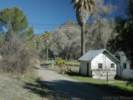 Entrance to Coalinga Hot Springs Entrance to Coalinga Hot Springs
|
||||||
|
Other articles:
Locations:
Coalinga Mineral Springs.
|
||||||
|
Other articles:
|
||||||
|
Other articles:
Locations:
Kreyenhagen Peak.
|
||||||
|
Other articles:
Locations:
Priest Valley.
|
||||||
|
Other articles:
Locations:
Priest Valley.
|
||||||
|
Other articles:
|
||||||
|
Other articles:
|
California Highway 198 crosses Peachtree Valley. | |||||
|
|
Friday 10 March 06 | |||||
| Our trip into London-Heathrow was about an hour early because we had tailwinds. Off the tip of Greenland they were up to 198 mph. While this made for a quick trip, it also made for a very bumpy flight as we were entering the jet stream. We landed at London just before dawn. The flight pattern went directly over London and, from the window, Cheryl could see the Thames River and the Tower Bridge. | ||||||
| In London we de-planed and went through passport control. Our luggage was not checked through to Sevilla because Iberia does not code-share with United. On the way back, though, Iberia had no problem checking our luggage through to San Francisco on United. | ||||||
| The line at passport control was very long, and it took us an hour and 20 minutes. Then we collected baggage, walked through customs and over to Terminal 2 from Terminal 3. Upon check in at Iberia, we were told that the gate would not be announced until 30-40 minutes before the flight. We got a coffee and a roll, and then went inside the security area to wait. There were several T-Mobile HotSpots at London-Heathrow, and I logged on to check e-mail while we waited. | ||||||
| Our flight to Sevilla was about an hour late, and we got to Sevilla about 3:00 PM. Rachel and Ian met us at the airport. We got the rental car, really a small van, called a Fiat Ulysse. It seats eight. I followed Rachel home around the north end of Sevilla, as the airport is on the east side of Sevilla and Rachel and Nacho live on the west side. | ||||||
| After arriving and getting settled, we took Rachel over to the Fiat dealership to pick up their new car. It is a Fiat Scenic. Nacho will use it mostly to drive to Rota for his new job. | ||||||
| We had a dinner of pasta, and then we managed to stay up until about 930 PM. | ||||||
|
|
Saturday 11 March 06 | |||||
| This morning we got going early to shopping. We went to Carrefour, which is a huge shopping mall and store, perhaps equivalent to a Super K-Mart. They have everything from tires to broccoli. One thing we bought was Cranberry juice. This is a new juice in Spain, appearing recently in the larger stores. | ||||||
| We had sandwiches for lunch. Rachel picked Nacho up at the train station, as he was arriving from Madrid on the AVE. The neighbor kids, Ale (Alejandro) and Blanquita came over -- literally as the neighbors hand their kids over the fence -- along with Ariana who is the cousin of Ale and Blanquita. For a while the kids colored on paper. Then they colored on the table, the then everything else. I played soccer with Ale, then tried to keep the coloring from getting too far out of control. | ||||||
| Nacho was working in his room, so I went out for a run. The downhill part was pretty good, but on the way back up, I would run up a block, and then across the slope, up a block, and then back across the slope. Meanwhile Rachel and Cheryl went to a store in Bormujos called IDEA to buy a large coffee pot. This is a kind of percolater in that the water in the botton section is forced up through the grounds into an upper section. The coffee is quite strong, and we microwave some milk to heat it, and then mix about 4 parts milk to one part coffee. | ||||||
| For dinner, Cheryl made pasta. After cleaning up, it was time for Rachel and I to get son and daughter in law at the airport. While Cheryl and I walked right through customs, the Customs officer stopped son and daughter in law. They checked one of the bags and found the box of Cheerios. son had to pull the bag of Cheerios out of the box, probably to show that there were no drugs hidden amongst the Cheerios. | ||||||
|
|
Sunday 12 March 06 | |||||
| This morning we got a slow start. We went to Parque de Alamillo just to get outside a little bit. On the way back we stopped at Cervezeria Aljarafe for a little lunch. Ian and Colin were asleep when we got home, so I also went upstairs and had a short nap. | ||||||
| This afternoon we went to the park. Ian's friend Fernando from his school also came to the park with his family. Ian and Fernando played and then hit each other and then played some more. "Afternoon" here is from about 400 PM until 800 PM. | ||||||
| For dinner Cheryl cooked salmon and made a big salad, then son broke up the salmon to put it on the salad. | ||||||
| After dinner Ian and Colin had a bath and the kids went to bed. Ian was pretty wound up and had a hard time going to sleep. | ||||||
|
|
Monday 13 March 06 | |||||
| Today was shop for supplies for Colin-day. Rachel went with us to Hipercor, the low-cost market for El Corte Ingles. | ||||||
| In the afternoon, I had a run, while some adults took the children to the park. Cheryl stayed home and made dinner. | ||||||
|
|
Tuesday 14 March 06 | |||||
| On Tuesday we went to Cordoba. We got a little bit of an early start and then drove to the Santa Justa railroad station in Sevilla. We got round trip tickets to Cordoba on the AVE. There was just a few minutes to spare before train departure time. | ||||||
|
Locations:
Rio Guadalquivir.
|
I recognized the Rio Guadalquivir when we crossed it. | |||||
| This was the first time Cheryl and I visited the Mezquita as it has been under repair our previous visits. | ||||||
| We got on the bus from the train station, but then missed our stop to get off. So we had a very complete tour of eastern Cordoba, I think. | ||||||
| Inside the Mezquita was very impressive. This location was a Roman bath, and maybe something else before it became a Christian church, a mosque, and a Christian church again. | ||||||
| We tried to visit the Alcazar, and nearly cirambulated the entire fort before we learned it was closed for repair. | ||||||
| Looking for lunch, we walked up through the Juderia until we came to Casa Pepe where we had eaten before. I guess maybe this place is a kind of tourist dive, as they certainly cater to tourists. However, they also do a very nice job of making you feel welcome. They put us in an upstairs room at one end, with lots of room around the table, so we could deal with the children without bothering the other customers. They also recommended food to us. You never know if you're getting taken when you're offered suggestions as a tourist, but these turned out to be very good. One suggestion was an eggplant fried in a batter (tempura eggplant?) with a light sorghum syrup that made it quite palatable. We had the usual salad, I had a nice halibut, and we shared a light white wine that seemed to go with everything. | ||||||
| Lunch was followed by a slow, meandering walk back to the train station, and then an AVE ride back to Sevilla. | ||||||
|
|
Wednesday 15 March 06 | |||||
| This afternoon we went to Triana so that son and daughter in law could buy a gift for the person taking care of their house, and Cheryl could buy something for Lee, who is taking care of our cat. | ||||||
| We parked in the parking lot called Paseo Colon on the Sevilla side of the river because the entry and return is relatively easy. | ||||||
| Exiting from the car park, we walked across the Triana bridge and then into the neighborhood of tile shops. We went to the largest tile shop where there were many options to choose from. After buying the tile, we walked around the block of tile shops, and then to the Triana side of the river were we had various refreshments. | ||||||
|
|
Thursday 16 March 06 | |||||
| Today we went into Sevilla and visited the Alcazar (fort) and grounds. | ||||||
| We drove into Sevilla and parked along the river then had a coffee, and walked to the Alcazar. | ||||||
| Like many such forts in Spain, the building was started by the Moors and then taken over by the Spanish, so it shows a variety of architectures. | ||||||
|
|
Friday 17 March 06 | |||||
| Today we left Sevilla driving south to El Puerto de Santa Maria, where we will pick up Nacho after work. Thenmorrow we are going to Zahara de los Atunes, a small town on the Atlantic Ocean near the Straits of Gibraltar. | ||||||
| We ate lunch in El Puerto while the rain beat down on the roof above, then drove to Zahara. | ||||||
| The weather was not too good, and we made a couple of attempts to get out, but nothing too serious or too successful. | ||||||
|
|
Saturday 18 March 06 | |||||
| Saturday morning, Colin had a high fever. We asked at the front desk of the hotel about a doctor. They directed us to a clinic in Barbate. Rachel, son, and daughter in law went in with Colin. They had no wait, and were seen immediately by a doctor. Because it was a Social Security clinic, there was no way to pay for the services, and the only cost was a couple of Euros for amoxicillin at the drug store across the street. | ||||||
| From Barbate, we visited Vejer de la Frontera, a white town on top of a hill. It took us a while to find a place to park both cars. | ||||||
| Then we got out and walked the of narrow streets across the top of the hill. We tried to eat in a Restaurante El Jardin del Califa, but they could not accomodate the size of our party for inside seating (it was raining) without a reservation. Instead we ate across the plaza at Restaurante Trafalgar. I had the roast lamb, very good, but not the best I've ever had. | ||||||
| The rain was a bit bothersome, but we didn't let it stop us. | ||||||
|
|
Sunday 19 March 06 | |||||
| Sunday, we left Zahara and stopped for a hike in the umbrella pine forests near Barbate. | ||||||
| From Barbate we drove to Conil, where we walked on the beach, and then had lunch. | ||||||
| We drove to El Puerto, and had a coffee with Nacho's brother: Julio, and his family: Pamen, Marta and Julito. | ||||||
| From El Puerto we drove to San Lucar de Barrameda where we stayed in Hotel Partner Doñana. | ||||||
|
|
Monday 20 March 06 | |||||
| On Monday we had reserved a tour of the Donana National Park, a wildlife sanctuary where the River Guadalquivir enters the Atlantic Ocean. Lots of birds there, but no bird flu yet in Spain -- yet. | ||||||
| In the morning we took a boat ride up the river getting off several times for a guided tours of the plains, forests, and salt marshes. | ||||||
| Our lunch on the river included Gambas al aljillo (prawns in garlic sauce) and Acedias (sand dabs?), while sampling the local sherry, a specialty of this region. | ||||||
| Last night we watched the pilgrims return from a pilgrimage to Rocio. They go through the national park of Donana, and then ride a ferry across the Rio Guadalquivir. There were hundreds of carts, and ferrying them all across the river took more than eight hours. | ||||||
|
|
Tuesday 21 March 06 | |||||
| Today we are returned to Bormujos from Sanlucar de Barrameda. | ||||||
|
|
Wednesday 22 March 06 | |||||
| Wednesday, son and daughter in law went to Aracena, in the mountains north of Sevilla. | ||||||
| I stayed in Bormujos and Rachel took me to the doctor. After a consultation, it was decided that I had a sinus infection following a cold, and an antibiotic was prescribed. | ||||||
|
|
Thursday 23 March 06 | |||||
| We stayed local on Thursday, getting ready to fly home on Friday. | ||||||
|
|
Friday 24 March 06 | |||||
| Today we flew home from Sevilla. | ||||||
|
Locations:
Eastern Star Wash.
|
The field trip for 2006's Desert Research Sympoium started with a visit to several locations on California Highway 127 north of Baker. Our first stop was in Eastern Star Wash on the west edge of the Shadow Mountains.
Up the wash we could see the water tank at the Eastern Star Mine. This road used to go all the way through to the Power Lines near Riggs wash, but now the way is blocked by a wilderness area. | |||||
|
Literature Cited:
Locations:
Eastern Star Wash.
|
This is field trip Stop 1-1 in Reynolds (2006). We parked here and walked across to the reddish outcrop on the other side of the wash. | |||||
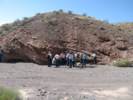 Field trip stop in Eastern Star Wash. Field trip stop in Eastern Star Wash.
|
From our parking place we walked across several branches of Eastern Star Wash to the small outcrop of reddish sediments. | |||||
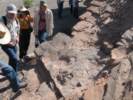 Gomphothere tracks. Gomphothere tracks.
|
There were tracks left by Miocene gomphotheres, antelopes, and camels.
Some of the gomphothere tracks were up to 12 inches in diameter. | |||||
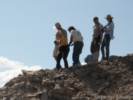 Someone hollered, "There are bird tracks up here," setting off a mad scramble. Someone hollered, "There are bird tracks up here," setting off a mad scramble.
|
Just as we were getting ready to leave, someone hollered, "There are bird tracks up here!" This set off a mad scramble up the loose shale slope. I enjoyed the scene from below, so I have no photograph of the tracks. There were described as a little indistinct, but definitely bird tracks. | |||||
|
Other articles:
Locations:
Silurian Hills.
|
On our way back to California Highway 127, we were delayed by a flat tire. To the south we had a nice view of the Silurian Hills. Our vehicle decided we would prefer to take the next few local field trips stops rather than driving up to Shoshone. So, at the Tonopah and Tidewater road bed in Valjean, we turned left, to the south. | |||||
|
Literature Cited:
Other articles:
|
This is field trip Stop 1-2 in Reynolds (2006) in a road bed cut of the Tonopah and Tidewater Railroad.
The red sediments filled an extending Miocene basin between 12 and 10 million years ago. The presence of Tapeats Sandstone in a red groundmass suggests a source from weathered sediments that occur only at the Tapeats locality on the north side of Clark Mountain. | |||||
|
Other articles:
Locations:
Silurian Hills.
|
We got back into the car and drove a little way further to the next field trip stop.
This is Field Trip Stop 1-3 from Reynolds (2006). I had been here before to see the Liesegang weathering. This is a pre-Miocene erosional surface over which were thrust carbonate gravity slide blocks from the west. The previous field trip I was distracted by the plants, and did not see the weathering feature. Of them, I can only remember the Abronia villosa. | |||||
|
Locations:
Silurian Hills.
|
From the Liesegang weathering location, the view of the Silurian Hills in the afternoon light was stunnning. Brian and Joe talked about the stratigraphy on display while I hunted for additional examples of the Liesegang weathering.
We drove up to take a look at the strongly accented strata on the left side of the photo. Then we drove down between "The Islands" to the playa of Silurian Lake. | |||||
|
Locations:
Silurian Lake.
|
We stopped in the center of Silurian Lake for a view and some photography. | |||||
|
Other articles:
|
To the east, the Silurian Hills were lighted up by the setting sun. | |||||
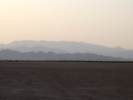 Ridge lines silhouetted by the setting sun. Ridge lines silhouetted by the setting sun.
|
To the northwest was an classic view of distant ridge lines silhouetted by the setting sun.
After taking in the view, we continued our crossing of Silurian Lake, and then returned to Zzyzx for some attitude adjustment and dinner. | |||||
|
|
Sunday, 23 April 2006 | |||||
|
Other articles:
|
This morning I left Zzyzx, stopping along the shore of Soda Lake for a view of the Halloran Hills and Hollow Hills. I will be traveling through these hills later in the day. | |||||
|
Other articles:
|
Also to the north are the Soda Mountains, an area I have never explored. | |||||
|
Other articles:
Locations:
Silver Lake (site).
|
After filling the gas tank in Baker, I drove north on California Highway 127 to Silver Lake.
I saw these footings at Silver Lake. The pattern of these footings suggested they may have supported a water tank on the Tonopah and Tidewater Railroad. However, at home later I noticed that the Tonopah and Tidewater road bed was closer to Silver Lake. | |||||
|
Other articles:
|
I started up the road labelled as Halloran Springs Road on several maps. The road became more and more faint until it dropped into a wash. Not able to navigate the drop off, I followed some tracks until they also turned around. Not wanting to turn around, I crossed a berm into a small wash. Followed this small wash a little way upstream, and then crossed another berm that gave me access to a power line tower. From the power line tower, I followed the power company access road out to the main Power Line Road. | |||||
|
Other articles:
Locations:
Kavorka Hills.
|
I came across this sign for "Kavorka Hills," about which I have no other information.
Missed the turn off for Thompson's Silver Lake to Goodsprings route, and finally turned up a small road along a wash. | |||||
|
Other articles:
|
When I got to the top of a ridge, I realized that I had missed Thompson's route again. So I returned along Halloran Springs Road until I found a road junction. | |||||
|
Other articles:
|
This road junction is marked by two poles, one of which can been seen sticking out of the hood of my car, but no sign.
I stopped here and walked a little way northwest on the route and then took this photo back toward my car parked at the junction. | |||||
|
Other articles:
|
Turning around, it did not appear that anyone had used this route in quite some time. | |||||
|
Other articles:
|
Looking forward, the same might be said for this short section toward Turquoise Mountain. | |||||
|
Other articles:
Locations:
Wander Mine.
|
From the crossroads of Thompson's Silver Lake to Goodsprings route and Halloran Springs Road, I returned on Halloran Springs Road to the Wander Mine, sometimes called the Wonder, the Wanderer, Huyten's Mine, or James Hyten's Mine. | |||||
|
Other articles:
|
This is the road junction with Halloran Springs Road, the road to Cree Camp, and nearby, a road to Turquoise Mountain.
This photo was taken from a dump of the Wander Mine. | |||||
|
Locations:
Wander Mine.
|
The workings at the Wander Mine are spread over a 1/4 mile or so, on a ridge of low relief, from southwest to northeast. | |||||
|
Other articles:
|
From the Wander Mine I headed south for Cree Camp. This is a slow road because it crosses many small watercourses each with a small dip. | |||||
|
Other articles:
|
||||||
|
Other articles:
Locations:
Cree Camp.
|
Cree Camp consists of a two room cabin and a second single room cabin a little way away. | |||||
|
Locations:
Cree Camp.
|
This cabin was quite small but the metal roof was still in pretty good shape.
The roof and shade porch of the two-room cabin were in pretty bad shape, but the cabin could still be made habitable. | |||||
|
Literature Cited:
Other articles:
Locations: Hytens Well. |
| |||||
|
Other articles:
Locations:
Wander Mine.
|
Back at the Wander Mine, I checked out some of the lower workings, but did not find anything remarkable. | |||||
|
Other articles:
Locations:
Turquoise Mountain.
|
From the Wander Mine there was a nice view of Turquoise Mountain to the northeast.
Determined to find Hytens Well, I continued east on Halloran Springs Road to the location shown on USGS maps. | |||||
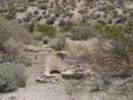 Hoist anchor at unknown mine. Hoist anchor at unknown mine.
|
I did not find a "well" at the location shown on the map as Hytens Well.
I did find this mine shaft and hoist anchor. However, this mine is not shown on maps, and I believe is a short distance past the location shown for Hytens Well. | |||||
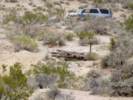 Mine shaft at unknown mine. Mine shaft at unknown mine.
|
||||||
|
Other articles:
Locations:
Solomons Knob.
|
While here I had a little lunch and enjoyed the view of Solomons Knob from vicinity of Hytens Well. | |||||
|
Other articles:
|
Returning to Halloran Springs Road, I traveled past the Wander Mine again and turned up the road to Turquoise Mountain. Here I found the junction with the unused route to Silver Lake.
There is a pole here with an orange traffic cone on top. | |||||
| Road north toward Turquoise Mountain from Halloran Springs Road. I think this might be BLM Route NN 581. | ||||||
|
Other articles:
|
Up in the canyon, where the road climbs toward Turquoise Mountain, I paused for a view to the north west of the road, and to think of people driving their Model T's up this road in the 1920's. | |||||
|
Locations:
Turquoise Mountain.
|
I continued up the canyon, then turned up the paved road to the top of Turquoise Mountain.
After enjoying the view for a few minutes, I returned to Turquoise Mountain Road to make my way to Francis Spring. | |||||
|
Other articles:
|
I turned off the paved Turquoise Mountain road on Thompson's (1921) route in the direction of Francis Spring. | |||||
|
Other articles:
|
This was a good little road, if a little narrow. At one point, a creosote bush bent my radio antenna. There was not much in the way of expansive vistas, but some of the local view were nice, such as this view northeast toward a small knob of granite. | |||||
|
Other articles:
|
||||||
|
Other articles:
|
||||||
|
Other articles:
|
The road passed across the upper end of a small pond. This pond is not mentioned by Thompson (1921). From the pond the road crossed a small divide into a watershed containing Francis Spring. | |||||
|
Other articles:
Locations:
Francis Spring.
|
Francis Spring is a very unfortunate spring. A pond has been scooped out, into which have been inserted various pieces of portable fencing and orange plastic construction fence. This has had no constructive effect, as the there is nothing to prevent cows or burros from wading into the pond and fouling it. | |||||
|
Other articles:
|
View down the canyon from Francis Spring, looking northeast across Shadow Valley to the southern Mesquite Mountains.
This was as far as I went on this road, checking out the view, and then returning the way I came. | |||||
|
Other articles:
Locations:
Solomons Knob.
|
Driving down Francis Spring Road toward Halloran Spring, there were varying perspectives on Solomons Knob. | |||||
|
Other articles:
Locations:
Bull Spring.
|
Drove briefly into Bull Spring. Did not see any water in the spring. However, there was some fresh green grass growing around the dead cat tails. | |||||
|
Other articles:
Locations:
Bull Spring Wash.
|
Francis Spring Road is a good road and easy to drive except for getting a little rough in the limestone allivium near Francis Spring. I wonder why limestone makes such lousy roads? | |||||
|
Other articles:
Locations:
Bull Spring Wash.
|
||||||
|
Other articles:
Locations:
Halloran Springs.
|
I stopped briefly at Halloran Spring and then got on US Interstate 15 crossing Shadow Valley and Mountain Pass into Ivanpah Valley. | |||||
|
Other articles:
|
View of Nipton across the Ivanpah Valley. | |||||
|
Other articles:
|
Castle Peaks to the southeast. | |||||
|
Other articles:
Locations:
Nipton.
|
||||||
|
Locations:
Nipton.
|
||||||
|
Other articles:
Locations:
Murphy Well.
|
||||||
|
Other articles:
Locations:
Murphy Well.
|
||||||
|
Literature Cited:
Locations: Hytens Well. Wander Mine. |
5-May-06Found the following in Vredenburgh, Shumway, and Hartill (1981):
| |||||
|
|
Friday, 2 June 2006 | |||||
|
Other articles:
Locations:
Don Pedro Reservoir.
|
||||||
|
Other articles:
|
||||||
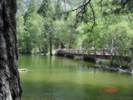 Merced River at Swinging Bridge. Merced River at Swinging Bridge.
|
||||||
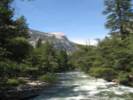 Merced River just below Happy Isles. Merced River just below Happy Isles.
|
||||||
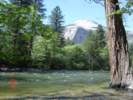 Merced River just below Happy Isles. Merced River just below Happy Isles.
|
||||||
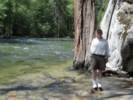 Tom by the Merced River Tom by the Merced River
|
||||||
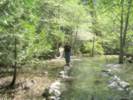 Cheryl by the Merced River Cheryl by the Merced River
|
||||||
|
|
Saturday, June 3, 2006 | |||||
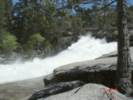 Cheryl's photo of the Silver Apron. Cheryl's photo of the Silver Apron.
|
||||||
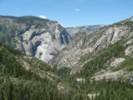 View from top of Nevada Fall. View from top of Nevada Fall.
|
||||||
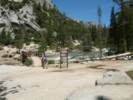 Merced River bridge at top of Nevada Fall Merced River bridge at top of Nevada Fall
|
||||||
|
|
Sunday, June 4, 2006 | |||||
|
Other articles:
|
||||||
|
Other articles:
|
||||||
|
Other articles:
|
||||||
|
Other articles:
|
||||||
|
Locations:
Pinecrest Lake.
|
||||||
|
Locations:
Pinecrest Lake.
|
||||||
|
Locations:
Pinecrest Lake.
|
||||||
|
Other articles:
|
||||||
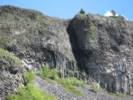 Columnar jointing at Columns of the Giants. Columnar jointing at Columns of the Giants.
|
||||||
|
Locations:
Columns of the Giants.
|
||||||
|
Other articles:
|
||||||
|
Other articles:
|
||||||
|
Other articles:
|
||||||
|
Other articles:
|
||||||
|
Other articles:
Locations:
Leavitt Falls.
|
||||||
|
Other articles:
Locations:
USMC Mountain Warfare Training Center.
|
||||||
|
Other articles:
|
||||||
|
Other articles:
|
||||||
|
Other articles:
|
||||||
|
Other articles:
|
||||||
|
Other articles:
|
||||||
|
|
Monday, June 5, 2006 | |||||
|
Other articles:
Locations:
Lee Vining.
|
||||||
|
Locations:
Lee Vining Creek.
|
||||||
|
Locations:
Negit Island.
|
||||||
|
Locations:
Paoha Island.
|
||||||
|
Other articles:
|
||||||
|
Other articles:
|
||||||
|
Literature Cited:
Other articles:
|
A road to the south gives access to the shore of Mono Lake and the sand dunes. There are sand dunes on both the north and south sides of California Highway 167 for several miles. A description of the Mono Dunes studied by Pavlik (1985) suggests that he studied the dunes to the north. | |||||
|
Other articles:
|
| |||||
|
Other articles:
|
||||||
|
Other articles:
|
||||||
|
Other articles:
|
||||||
|
Other articles:
Locations:
Anchorite Pass.
|
An anchorite is a person who has retired into seclusion for religious reasons. | |||||
|
Other articles:
|
||||||
|
Other articles:
|
||||||
|
Other articles:
|
||||||
|
Other articles:
|
||||||
|
Other articles:
|
||||||
|
Other articles:
|
||||||
|
Other articles:
|
||||||
|
Literature Cited:
Other articles:
|
I believe this to be F. M. Tarpey's stone store front. Compare to photograph 49 on page 50 of Shamberger (1978). | |||||
|
Other articles:
|
||||||
|
Other articles:
|
||||||
|
Literature Cited:
Other articles:
Locations: Candelaria. |
| |||||
|
Other articles:
|
||||||
|
Other articles:
Locations:
Columbus Salt Marsh.
|
||||||
|
Locations:
Columbus Salt Marsh.
|
||||||
|
Other articles:
Locations:
White Mountains.
|
View across the Columbus Salt Marsh to the Volcanic Hills and the White Mountains. | |||||
|
Other articles:
|
||||||
|
Other articles:
Locations:
Tonopah.
|
||||||
|
Other articles:
|
||||||
|
Other articles:
Locations:
Amargosa River.
|
||||||
|
Other articles:
Locations:
Amargosa River.
|
||||||
|
Other articles:
Locations:
Amargosa River.
|
||||||
|
Literature Cited:
Other articles:
Locations: Big Dune. |
| |||||
|
Locations:
Ivanpah (#1).
|
||||||
|
Literature Cited:
Locations:
Coliseum Gorge.
|
This is about milepost 174 in Casebier (1988). | |||||
|
Locations:
Coliseum Mine.
|
||||||
|
Locations:
Clark Mountain.
|
||||||
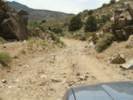 Heading down from the Coliseum Mine. Heading down from the Coliseum Mine.
|
||||||
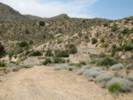 Mill alongside the road. Mill alongside the road.
|
||||||
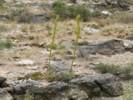 Utah Agave (Agave utahensis) near Clark Mountain Utah Agave (Agave utahensis) near Clark Mountain
|
||||||
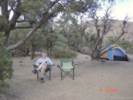 Relaxing in Mid Hills Campground. Relaxing in Mid Hills Campground.
|
My sister said this about the photo, "… and the photo of you in the campground looks, well, like you." I wonder what she meant by that? | |||||
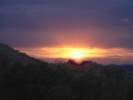 Sunset in Mid Hills Campground Sunset in Mid Hills Campground
|
||||||
|
|
June 7, 2006 | |||||
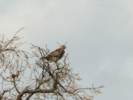 Golden Eagle in the Mid Hills Campground Golden Eagle in the Mid Hills Campground
|
||||||
|
Other articles:
|
Purshia tridentata (Pursh) DC var. glandulosa (Curran) M. E. Jones resprouting after the Hackberry Complex Fire. There were a few plants of this species resprouting. However, there were not many, and I would suggest they are more likely damaged by fire than other species. | |||||
|
Other articles:
|
This is a new seedling in 2006 at Pinto Mountain. It is very small. | |||||
|
Other articles:
|
||||||
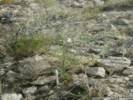 White 142 at Pinto Mountain on 7-Jun-06. White 142 at Pinto Mountain on 7-Jun-06.
|
||||||
|
Other articles:
|
||||||
|
Other articles:
|
||||||
|
Other articles:
|
||||||
|
Other articles:
|
||||||
|
Other articles:
|
||||||
|
Other articles:
|
||||||
|
Other articles:
|
||||||
|
Other articles:
|
||||||
|
Other articles:
|
||||||
|
Other articles:
|
||||||
|
Other articles:
|
||||||
|
Other articles:
|
||||||
|
Other articles:
|
||||||
|
Other articles:
|
||||||
|
Other articles:
|
||||||
|
Other articles:
|
16 | |||||
|
Other articles:
|
||||||
|
Other articles:
|
||||||
|
Other articles:
|
||||||
|
Other articles:
|
||||||
|
Other articles:
|
||||||
|
Other articles:
|
||||||
|
Other articles:
|
||||||
|
Other articles:
|
||||||
|
Other articles:
|
||||||
|
Other articles:
Locations:
Mid Hills Campground.
|
||||||
|
Other articles:
|
||||||
|
Other articles:
|
||||||
|
Locations:
Coalinga Mineral Springs.
|
26-Aug-06
"The mineral springs was acquired from a foreclosure of a loan of just a few hundred dollars. This was a real part of their family business in those early years. They leased it later and finally sold it in the 1930s. "Kreyenhagen Peak, Kreyenhagen Shale, Kreyenhagen Hills [are] all named after Gustav and Julia and their 5 children, Adolph, Emil, Hugo, Charles, and Bertha." | |||||
|
|
Friday, September 22, 2006 | |||||
|
Other articles:
Locations:
Half Dome.
|
||||||
|
Other articles:
Locations:
Tenaya Lake.
|
View of Tenaya Lake from to top of the view point at Olmstead Point. | |||||
|
Locations:
Tenaya Lake.
|
We stopped for lunch at Tenaya Lake. | |||||
|
Other articles:
Locations:
Saddlebag Lake.
|
||||||
|
Other articles:
|
||||||
|
|
Saturday, September 23, 2006 | |||||
|
Other articles:
|
We started off Saturday morning, headed south on US Highway 395, and were talking about Rush Creek and the June Lakes area. Cheryl though she would like to go around the loop. | |||||
| California Highway 158 turns off to the southwest just before Rush Creek. There is a turnoff to Parker Lake, and then the road goes over a little rise to give a view of Grant Lake. I don’t think the canyon has a name in common usage. | ||||||
|
Other articles:
Locations:
Grant Lake.
|
The road hugs the west side of the canyon, and there is a marina and campground on Grant Lake. | |||||
| There is a short, narrow section of the canyon, and then it opens up to Silver Lake. The Rush Creek trailhead is just at the lower edge of Silver Lake. | ||||||
| We drove by the power station and saw a little bit of the tram tracks. The tram does not run any more. | ||||||
| Then I tried a few side streets between Silver Lake and Gull Lake. I was hoping to get a view of Rush Creek where it comes down from Agnew Lake into Silver Lake. There is one house that is built right on the rock outcrop. It looks like this might be possible place to climb up on the rock, but one would have to work around some private property. | ||||||
|
Other articles:
Locations:
Carson Peak.
Gull Lake.
|
We stopped at Gull Lake for a view, and we drove through the neighborhoods a little bit. It may be possible to rent a small house during the summer. This might be an alternative for me to staying in the shared housing at Lee Vining. I will have to make some inquiries. | |||||
| From Gull Lake, past June Lake, and then north on US Highway 395 to the Vista Point for the West Portal. | ||||||
| Somewhere near here, the water from Grant Lake enters a tunnel under the Mono Craters. It then comes out in the Owens River near Owens River Road. | ||||||
|
Other articles:
Locations:
Aeolian Buttes.
West Portal.
|
Took some photographs of the Aeolian Buttes from the Vista Point. The buttes are composed of Bishop Tuff, i.e., the big eruption from Long Valley caldera. I don't think the interpretative sign gave the thickness of the Bishop Tuff at this location. In Anza-Borrego, I remember it to be about 6 inches thick, and I believe it is on the range of a quarter to half-inch in Nebraska. | |||||
| Turned right off of US Highway 395. At this intersection there was a whimsical Tomb of the Unknown Fisherman. The intersection has been re-aligned, and now it has been replaced by the Grave of the Unknown Miner. I did not take a photo because the light was bad. | ||||||
|
Other articles:
Locations:
Panum Crater.
|
Back on California Highway 120, we continued to a spot opposite Panum Crater. Here, I climbed part-way up the hill for a photo of the crater to the north. While this view is OK, it sould be better from higher on the hill. While it took me about 20 minutes to climb the hill, I was back at the car in about five minutes. | |||||
|
Other articles:
Locations:
Bloody Canyon.
Bloody Canyon (upper).
Mono Pass.
Mount Gibbs.
Mount Lewis.
|
Nevertheless, there was a good view of Bloody Canyon to the west in the morning light. | |||||
|
Literature Cited:
Other articles:
Locations: Mount Biedeman. Paoha Island. |
| |||||
|
Other articles:
Locations:
South Tufa Area.
|
Also to the right (east) of Panum Crater is the South Tufa Area. The parking lot is behind the tree branch. | |||||
|
Other articles:
Locations:
Cedar Hill.
|
Further to the right (east) of Panum Crater, and across Mono Lake is Cedar Hill. | |||||
|
Literature Cited:
Other articles:
Locations: Mono Mills. |
| |||||
|
Other articles:
Locations:
Big Sand Flat.
|
| |||||
| The only marked pass on this portion of California Highway 120 is Sagehen Summit. I can't remember how high the highway sign said the pass was. The GNIS does not list Sagehen Summit. From the Delorme atlas, I would estimate it is about 8127 ft. There were roads leading south to Crooked Meadow, and we could see some pretty yellow and green foliage on the hills in that direction. | ||||||
|
Other articles:
|
||||||
|
Other articles:
|
||||||
|
Other articles:
|
Immediately upon entering Adobe Valley, we turned northeast on Dobie Meadows Road. It was actually quite some distance, farther than I had expected through the hills to the Adobe Valley Spillway. We went through a few closed basins, on a road that was mostly light sand, with very little rock. | |||||
|
Other articles:
|
||||||
|
Other articles:
|
Looking north on Dobie Meadows Road. | |||||
|
Other articles:
|
View of the spillway area from the ridge immediately to the south. | |||||
|
Other articles:
|
Closer view of the spillway. | |||||
|
Other articles:
|
Looking downstream from the spillway. | |||||
|
Other articles:
|
The spillway was easy to recognize, as we came through a small cut, and then saw it before us. | |||||
| The spillway itself is not very dramatic. It is not incised, and does not drop away steeply in the direction of the current, to the south. | ||||||
| The elevation of the spillway is 7203 feet, by the bench mark just off the road. | ||||||
|
Other articles:
|
In fact, the land drops away much more steeply to the north, and very quickly we were on the former lake beds of Mono Lake. Here the road was a little more sandy, and I could understand the warning that the road was not appropriate for conventional automobiles. | |||||
|
Other articles:
Locations:
Alameda Well.
|
We did a drive-by of the location of Alameda Well, but it was signed and posted as property of the Flying M Ranch. | |||||
|
Other articles:
|
Back up California Highway 167 we turned east, crossed the stateline into Nevada, and continued on Nevada State Route 359 a short way. At the power lines we turned north on a combination power line road and Toiyabe Forest 058. While Forest Road 058 diverged slightly to the east, we stayed on the power line road, as it seemed to be the better road. | |||||
| At a four-way junction, we turned right, returning to Forest Road 058 as it made its way east and a little north across Alkali Valley. | ||||||
|
Other articles:
|
The view of North Alkali Valley, also known as Aurora Valley, was dramatic, as was the road where it dropped into the valley. | |||||
|
Other articles:
|
I could see the shack at Buckram Well to the east, but we continued north on what was not Forest Road 058C. We met our only traffic here, two pickups, one with a trailer, that were returning from a wood gathering expedition. | |||||
| The driver of the lead pickup warned us not to continue through on 058C, because there was a burned area with very difficult travel. | ||||||
| The last part of the road to the spillway was very rough, made of basalt cobbles. | ||||||
|
Other articles:
Locations:
Mount Hicks Spillway.
|
| |||||
|
Other articles:
|
We went up a little side road looking for a place to eat. We found one, but were beset by yellow jackets, as soon as the car stopped. The yellow jackets were not particularly aggressive, but we ate our lunch in the car and moved on rather quickly. | |||||
| I did get out and looked around. There were many obsidian flakes at this location. It's in a pass, there is probably water, and there are pinyons for nuts, and to hunt game. | ||||||
| Our return trip went via Buckram Well. The shack is pretty dilapidated, and looks as though it could fall over any time. There is a corral that had a small barn or shed, now also collapsed. | ||||||
| On our way out, I found the well. It has a casing of 2 ft diameter corrugated pipe and there is water in the pipe at 6 to 7 feet depth. | ||||||
|
Other articles:
|
From there, we continued straight out, back to the four way junction, and then straight across toward Larkin Lake. | |||||
|
Other articles:
Locations:
Larkin Lake.
|
From a distance the lake appears red, but this is because of the red leaves on the dried up vegetation. | |||||
|
Other articles:
|
In the center of the dry lake, a hole has been scooped out, and resulting hole contained some very green water. There were pollywogs in the water, some of which had front and back legs. But many had died. The yellow jackets were swarming to eat the dead pollywogs. Later, having returned home, I reviewed the collections of frogs at the Museum of Vertebrate Zoology (MVZ). There are four species of frogs that have been collected in Mono County. They are:
| |||||
|
Literature Cited:
Other articles:
Locations: Trench Canyon. |
| |||||
|
Other articles:
|
From there on, the road was more or less sandy, but nothing that was particularly threatening. | |||||
|
Other articles:
Locations:
Lime Kiln.
|
We stopped at the Lime Kiln, having missed the Bodie and Benton Roadbed. I noted that there were some excavated tufa deposits here that must have been the source material for the kilns. | |||||
| Kirkwood Spring appeared to be occupied by a house, and we continued on Dobie Meadows Road until we reached Cottonwood Canyon Road, also the road to Bodie. | ||||||
| We took a little shortcut on Cemetery Road from CA Hwy 167 to 395. | ||||||
|
Other articles:
Locations:
Mill Creek.
|
Stopped to take a photo of Mill Creek, on its way to Mono Lake. | |||||
|
Other articles:
Locations:
Mono Lake Cemetery.
|
Then we stopped in the cemetery for a little while to view the headstones. | |||||
|
Other articles:
Locations:
Mono Lake County Park.
|
| |||||
| From there, we came back to the motel, where I am making these notes, while we wait for dinner time. | ||||||
|
|
Sunday, September 24, 2006 | |||||
|
Other articles:
Locations:
Ellery Lake.
|
The metamorphic rocks behind Ellery Lake were lit up by the morning sun. | |||||
|
Locations:
Cathedral Peak.
|
Cheryl on the flanks of Lembert Dome with Cathedral Peak in the background. | |||||
|
Locations:
Soda Springs.
|
We parked at the Lembert Dome trailhead parking lot, and set out for Soda Springs. We got started in the wrong direction and learned the we were headed for Dog Lake. Catching on, we returned to the road cross country. There is a half-mile hike down a dusty road to the real trailhead for Soda Springs. Then another half-mile hike on a flat trail to the springs. At Soda Springs there is a small spring mound with red algae around. From there, we walked down to the bridge over the Tuolumne River, and then on a small trail cross country to the Tuolumne Meadows Grill, then back to the Lembert Dome along the highway. | |||||
|
[Previous Page]
[Next Page]
Go to page: [1800s] [1900s] [1910s] [1920s] [1930s] [1940s] [1950s] [1960s] [1970s] [1980s] [1990] [1991] [1992] [1993] [1994] [1995] [1996] [1997] [1998] [1999] [2000] [2001] [2002] [2003] [2004] [2005] [2006] [2007] [2008] [2009] [2010] [2011] [2012] [2013] [2014] [2015] [2016] [2017] [2018] [2019] [2020] [2021] [2022] [2023] [2024] [A] | ||||||
| If you have a question or a comment you may write to me at: tas4@schweich.com I sometimes post interesting questions in my FAQ, but I never disclose your full name or address. |
Date and time this article was prepared: 4/27/2024 3:24:00 PM |
|||||